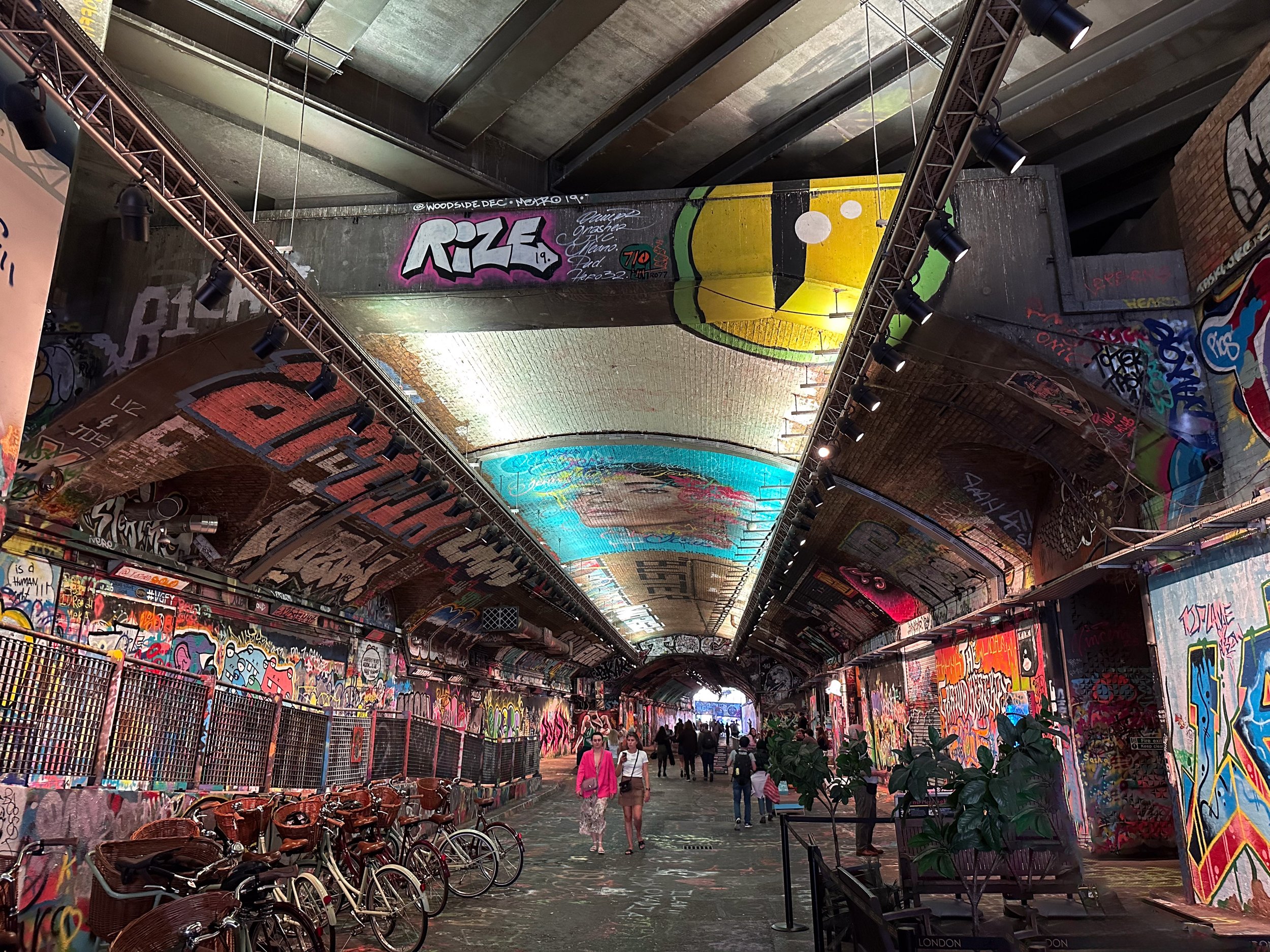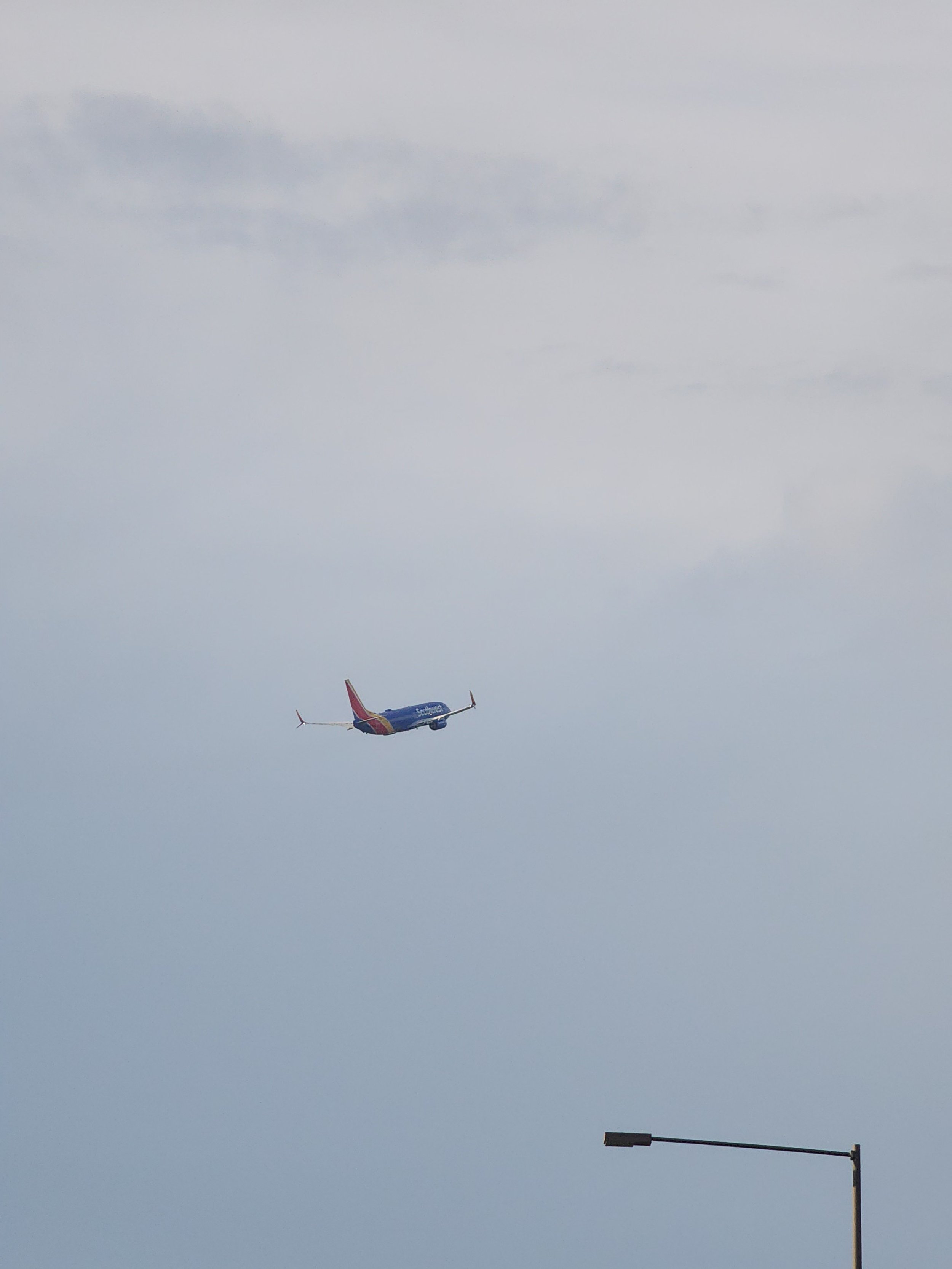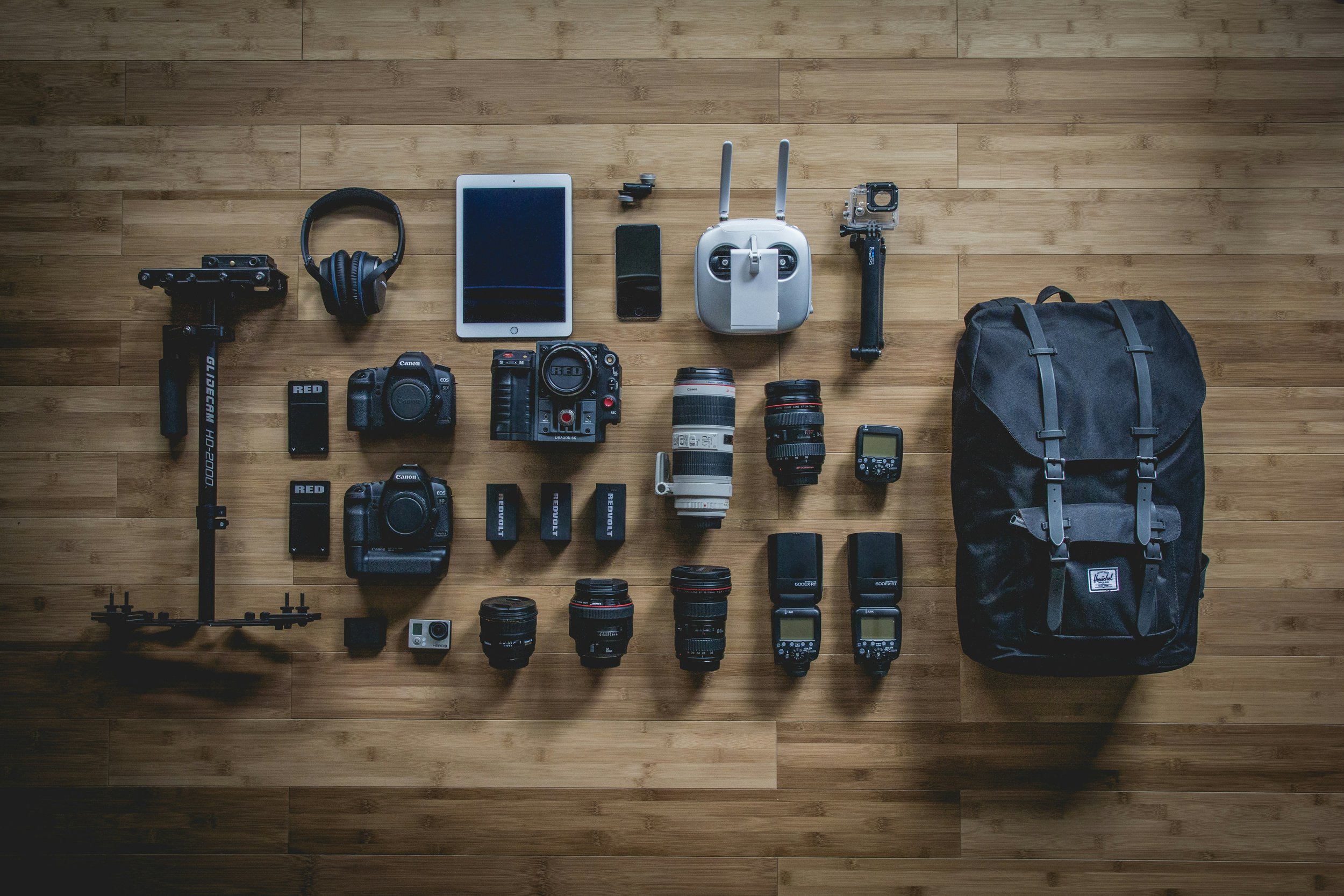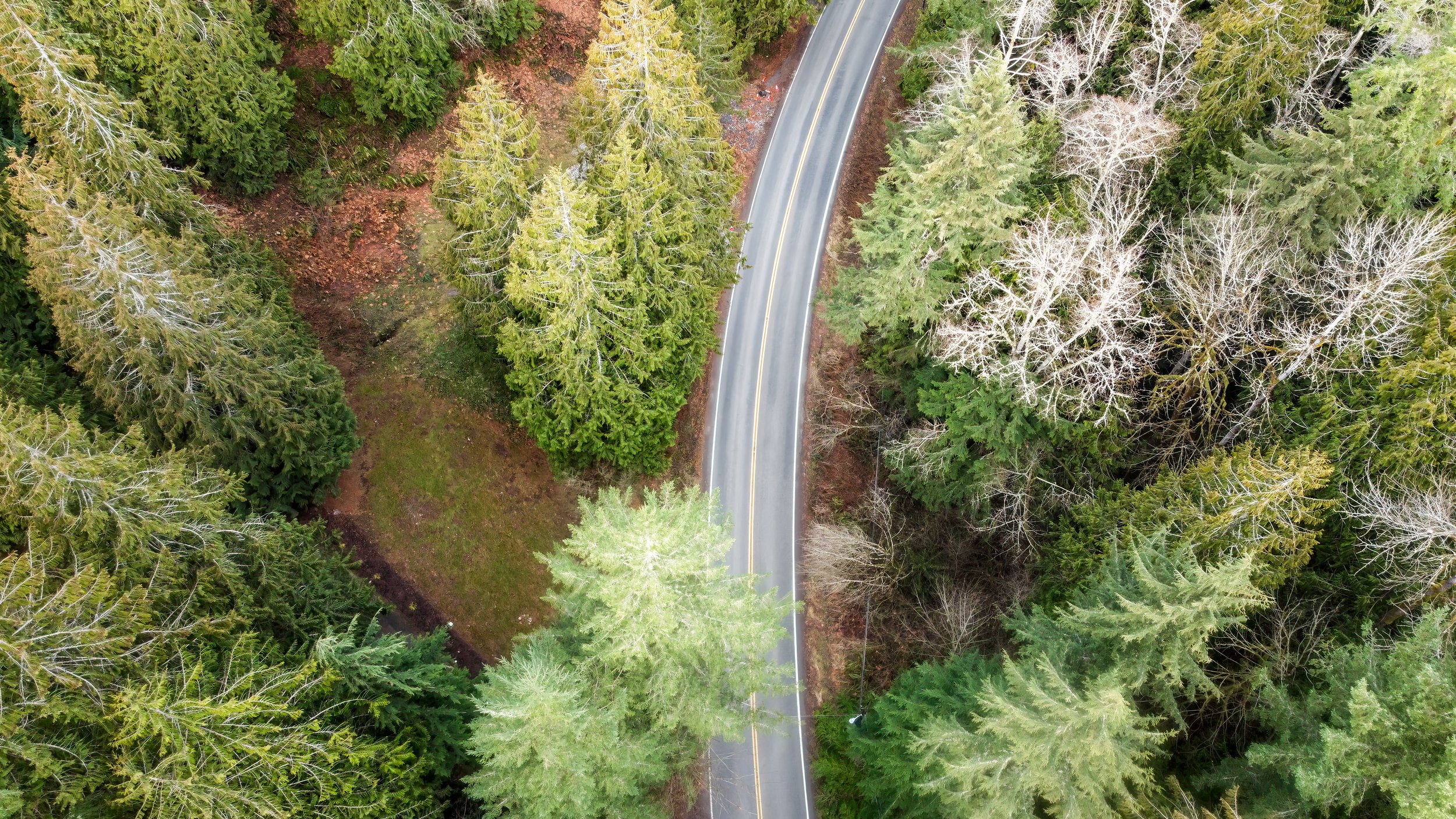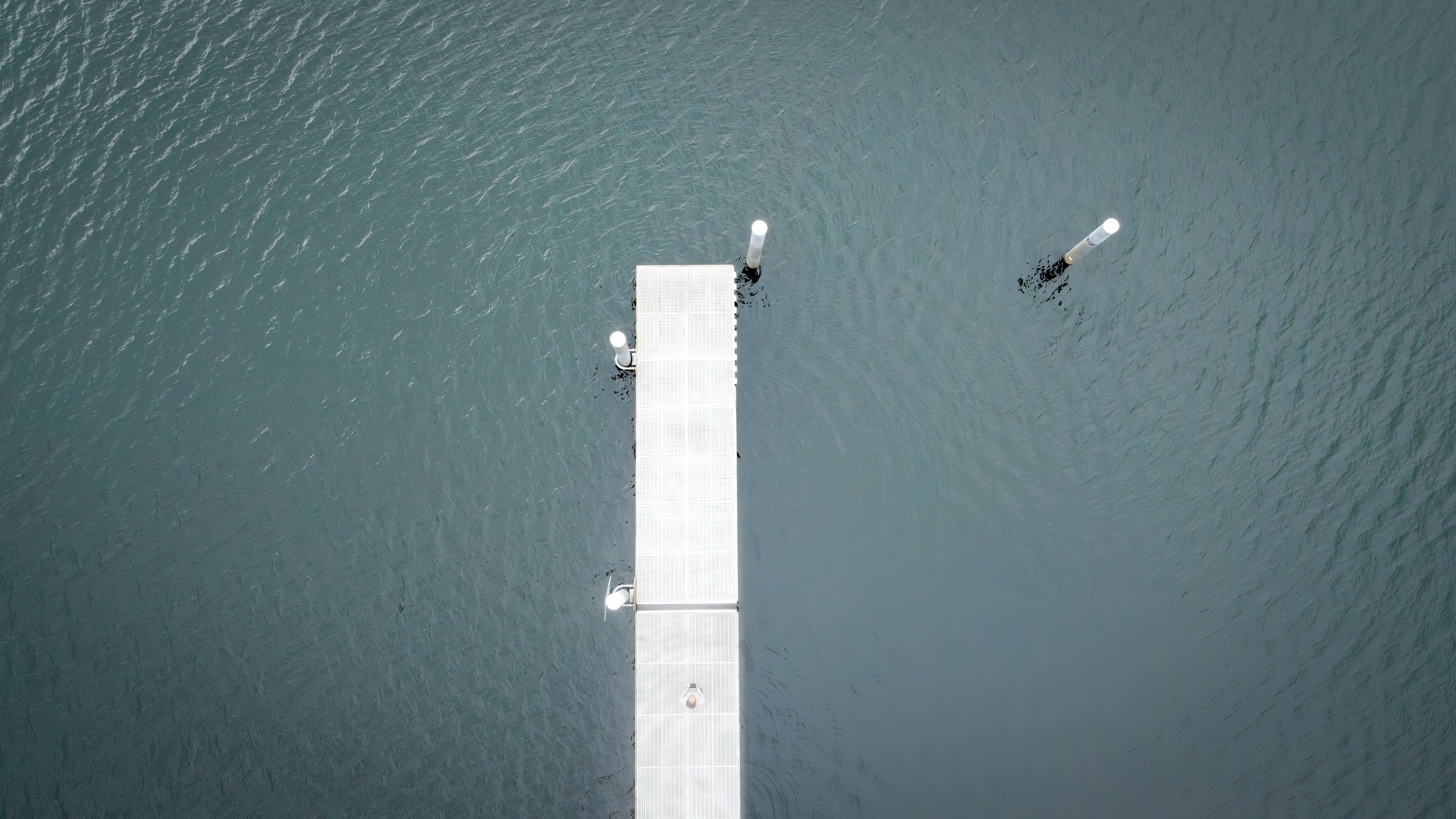POV Photography and Shooting Experience
In this video, I'm testing out the DJI Osmo Action 2 mounted on my chest for some POV photography. I might look like a dork, but I'm trying something new! Lately, I've been inspired by channels where people just shoot and share what they're capturing—no epic edits, just the raw process. So, I decided to give it a try myself. Make sure to check out @the_camera_life channel.
The gear I use:
7 Reasons to Use a Dedicated Camera Instead of a Mobile Phone
As someone who's spent a lot of time behind the lens, I’ve experimented with everything from the latest smartphone cameras to high-end DSLRs and mirrorless systems. While I absolutely appreciate the convenience and growing capabilities of mobile phone cameras, there comes a point in every serious hobbyist's journey where you start to wonder: is it time to invest in a dedicated camera? I found myself at that crossroads, and here are seven reasons why I decided to make the switch—and why you might want to consider it too.
1. Superior Image Quality
The first thing I noticed after transitioning to a dedicated camera was the massive improvement in image quality. Even with all the advances in phone cameras, they just can’t match the detail and clarity that come from a camera with a larger sensor. In challenging lighting conditions, a dedicated camera captures more light, which translates to richer colors, finer details, and better overall image quality. When I compare photos from my camera to those taken with my phone, the difference is night and day.
2. Creative Control
One of the things I love most about photography is the ability to control every aspect of a shot. With my dedicated camera, I can manually adjust settings like aperture, shutter speed, and ISO to create exactly the image I envision. It’s true that some smartphones offer manual controls, but they don’t come close to the depth and precision I get from my camera. Having this level of control has allowed me to experiment more and really push my creativity.
3. Lens Versatility
When I first started out, I didn’t realize just how much the right lens could transform a photo. With a dedicated camera, I have the flexibility to swap lenses depending on what I’m shooting. Whether it’s a wide-angle lens for capturing vast landscapes, a prime lens for those tack-sharp portraits, or a macro lens to get up close and personal with nature, the options are virtually endless. My phone, even with its multiple lenses, just can’t compete with the versatility of a dedicated camera system.
4. Ergonomics and Handling
I’ve always appreciated the feel of a good camera in my hands. There’s something incredibly satisfying about the tactile experience of turning a dial or pressing a shutter button. Dedicated cameras are designed for photography, which means they’re built with ergonomics in mind. I can shoot for hours without my hands cramping or getting fatigued, which isn’t something I can say about using my phone for extended periods. Plus, having a real viewfinder to frame my shots makes a world of difference.
5. Battery Life for Long Shoots
One of the most frustrating things about using my phone for photography was running out of battery in the middle of a shoot. Phones are great for quick snaps, but when I’m out for a full day of shooting, they just don’t have the endurance I need. My dedicated camera, on the other hand, can keep going all day, especially with a spare battery or two in my bag. This peace of mind allows me to focus on capturing the moment without worrying about my gear dying on me.
6. Depth of Field and Bokeh
I’ve always been a fan of those dreamy backgrounds with beautifully blurred bokeh, especially in portraits or close-up shots. While some phones can simulate this effect, it often feels artificial. With my dedicated camera, I can achieve natural-looking depth of field that really makes my subject stand out. This level of control over focus and background blur is something I’ve come to cherish, and it’s one of the reasons I keep reaching for my camera instead of my phone.
7. The Joy of Learning
Finally, there’s a real joy in learning how to use a dedicated camera. It’s been a rewarding experience to dive deep into the technical aspects of photography—from mastering the exposure triangle to experimenting with different lenses and techniques. This process has not only improved my skills but also deepened my appreciation for the art of photography. Each time I pick up my camera, I feel like I’m not just taking photos but truly creating something meaningful.
Making the switch from your phone to a dedicated camera is a big step, but it’s one that can open up a whole new world of possibilities in your photography. If you’re serious about your craft and want to take your skills to the next level, investing in a dedicated camera might just be the best decision you make.
My Alaskan Adventure
A few months ago, my wife and I embarked on a cruise from Seattle to Alaska with the Norwegian Cruise Line. This was one of the most magical trips I’ve ever taken. I don’t say that lightly or jokingly, but it’s true. Our seven days in Alaska were perfect. The weather held out extremely well, the cruise line and service were amazing, and the overall trip was something that we both really needed.
Of course, as a photographer, I couldn’t resist bringing a couple of cameras along to capture the breathtaking scenery. However, this was not a dedicated photography trip. Photography wasn’t the main purpose, so I didn’t have opportunities to wake up before sunrise or stay out in locations past sunset. Our schedule was dictated by the cruise, the daily activities we chose, and at some point, we were just literally at sea. Even though photography wasn’t the main focus of this trip, I still took over 2,000 pictures. Not all of them were great, and many were for panoramic shots, but I’m quite pleased with the results.
The Gear I Packed
For this trip, I brought along my FUJIFILM X-T5 with a Tamron 18-300mm lens, Ricoh GR IIIx, and FUJIFILM XF10. I could have brought more cameras, but I wanted to keep things as light as possible. I started the trip shooting in the HEIC format on the X-T5 but quickly realized I needed to shoot in RAW as well. That’s the beauty of having two memory card slots.
Capturing the Essence of Alaska
Despite the challenges of shooting on a non-photography trip, I managed to capture some stunning images. One of the highlights was Glacier Bay National Park. The overwhelming beauty of the glaciers and the pristine wilderness was almost too much to take in. At one point, I even told my wife that I felt “photographed out.” The amazing thing about this trip is that you could visit Alaska 100 times and have a different experience each time.
Below are some of my favorite images from each stop we made on our journey:
Overall, I’m pretty happy with the images I captured. This trip reminded me that sometimes, even when photography isn’t the main focus, you can still find beauty and inspiration in unexpected places. Alaska’s vast and varied landscapes offer endless opportunities for photographers, and I can’t wait to return for another adventure.
Lessons from "Steal Like an Artist" From a Photographer
Reading Austin Kleon's "Steal Like an Artist" was a game-changer for me as a hobbyist photographer. The book, essentially a manifesto for creativity in the digital age, emphasizes that inspiration from the world around us helps create something new and unique. As photographers, we often feel like everything's been shot before, but Kleon’s insights show that our unique perspectives bring fresh life to our work. Several of his tips resonated deeply with me and my photography journey.
The first, and perhaps most impactful, is the book's title itself: "Steal Like an Artist." Kleon encourages embracing the idea that nothing is original and that drawing inspiration from other artists is crucial. This means looking at the works of photographers, painters, and even writers, and using what inspires us in our own work. For instance, I find inspiration in Gordon Parks’ storytelling through photography and stunning images on platforms like Glass. One specific influence is Klaus Tiedge, a wildlife photographer who passed away a few years ago. His approach to photographing animals with a sense of majesty and grandeur is something I try to emulate when taking pictures of my dog. Watching a documentary on his last big safari was incredibly inspiring. When I photograph my dog, I aim to capture her as the queen of her environment, just as Tiedge did with wild animals.
Another tip that struck a chord was "Use Your Hands." Kleon advises engaging in physical activities to spark new ideas and foster deeper creative processes. For me, this means stepping away from my office and going on walks with my dog or visiting the beach. This break from screens and digital devices relaxes me and often leads to blog post ideas or new photography concepts. There’s something powerful about letting the mind wander and giving it space to process thoughts in the background. Additionally, reconnecting with tactile photography, like flipping through a photo book, can be incredibly inspiring. It’s a way to see what others have done, learn new techniques, and reignite my passion for photography.
Lastly, the idea of being boring resonated with me. Kleon suggests embracing routine and discipline to maintain productivity. This means taking your camera everywhere and making photography a daily habit. It’s about finding beauty in the mundane—whether it’s during a walk with your dog, a baseball game with your kids, or a simple picnic. By taking at least one picture every day, editing it, and sharing it on platforms like Glass, Flickr, or Instagram, you become a better photographer. This routine isn’t glamorous, but it’s effective. It reminds me of Tiger Woods advising college golfers to pick up their golf clubs 1,000 times a day. The point isn’t to take 1,000 shots but to become intimately familiar with your equipment. Similarly, knowing your camera inside and out allows you to react quickly and capture the perfect shot when the moment arises.
Overall, "Steal Like an Artist" is a fantastic book for any creative, especially hobbyist photographers. It highlights the importance of daily practice, sharing your work, simplifying your gear, and embracing routine. Even if we’re not professionals, these habits make us better photographers. Our goal is to document our lives and create an archive for future generations. Embracing these points will undoubtedly help anyone on their photography journey.
The Impact of Japanese Wisdom on My Photography
Photography can transcends merely capturing images; it involves conveying emotions, telling stories, and immortalizing the essence of ephemeral moments. My journey in photography has always been about blending traditional wisdom with cutting-edge technology. A few months ago I stumbled upon the YouTube video titled "5 Japanese Philosophies to Improve Your Photography," which has profoundly influenced my approach to photography. Let me share how these philosophies have enhanced my skills and deepened my appreciation for this art form.
Kaizen: Continuous Improvement
The philosophy of Kaizen, which means 'change for the better', initially gained international recognition through the business practices of Toyota. However, its application extends far beyond, touching the realms of personal growth and creativity. In photography, Kaizen encourages me to embrace continual, incremental improvements. Every time I grab my camera I make sure to see an opportunity to refine my technique, shift my perspective, or experiment with new styles. This philosophy reminds me that mastery is a constant journey, not a destination.
Suki: Love What You Do
Suki, translating to 'love what you do,' resonates deeply with me. This principle underlines the importance of passion in photography. Loving the process naturally drives me to spend more time taking photos, study the work of people who came before me, and exploring different narratives through my lens. It’s this love for photography that keeps my Ricoh Gr3x with me, chasing the perfect light or capturing a fleeting moment.
Nanakorobi Yaoki: Resilience
The saying 'fall seven times and stand up eight' encapsulates the essence of resilience. Photography, much like life, is fraught with setbacks and failures—missed opportunities, technical mishaps, or the occasional harsh critique. Each of these setbacks, while frustrating, is a stepping stone towards improvement. This philosophy reminds me to persevere, learn from each mistake, and return stronger and more determined.
Ichigo Ichie: Cherish Every Moment
Ichigo Ichie, meaning 'one time, one meeting', teaches the importance of valuing every encounter as if it were once-in-a-lifetime. This is particularly poignant in everyday life and landscape photography, where moments are fleeting and unique. Adopting this mindset has transformed how I shoot, making me more attentive and approach each day as something truly irreplaceable.
Junto Iro: Embrace Your Unique Style
Junto Iro, or 'ten people, ten colors', celebrates individuality. Finding and nurturing my style is daunting yet essential in a world teeming with photographers and visual content. This philosophy encouraged me to appreciate my unique perspective and creative voice, rather than constantly comparing myself to others. It’s through the process of embracing my individuality that my photographs have begun to feel authentically mine, telling their own stories.
Integrating these five Japanese philosophies into my practice has not only sharpened my technical skills but also enriched my understanding and love for photography. These teachings guide me to lead a more thoughtful, purposeful creative life. These philosophies are an on going practice, each shot offering a new lesson, a new opportunity to connect with the world.
Capturing Life's Fleeting Moments
Photography, for me, is more than just a hobby—it's a profound way of expressing my creativity and emotions without needing to pick up a pen or a paintbrush. The world is fast transforming, and so is the realm of photography. Gone are the days when the art of capturing the perfect shot was a meticulous process of exploring and observing. Now, the rise of smartphones has democratized the ability to capture images, making photography accessible to everyone. However, this shift sometimes overshadows the mindful approach to photography, where each click of the shutter is intentional and meaningful.
Amidst the whirlwind of video content and platforms morphing to resemble one another, like Instagram taking cues from TikTok, there remain sanctuaries like Flickr and Glass. These platforms are bastions for photographic enthusiasts who value the depth and connection that photography brings. Sharing my work on these sites, engaging with fellow photographers, and delving into discussions about techniques and visions feels like participating in a vibrant, global gallery.
Each photo I take connects me to the world in a unique way. There’s a certain magic in observing the world, noticing the dance of light and shadow, the fleeting expressions of people, and the timeless landscapes. Capturing these moments makes them immortal, allowing me to preserve a fragment of time forever—a laugh, a storm, a quiet street at dawn.
Photography has also become a significant part of how I document and share my life’s journey. It’s thrilling to think about how the slices of life I capture today can become windows to the past for future generations, offering glimpses of how we lived, what we cherished, and the environment we inhabited.
I often find myself wishing I had started this journey earlier, perhaps during my college days. Yet, there's something incredibly fulfilling about embracing photography now. It’s not about striving to be the best; it’s about living in the moment, preserving those moments, and sharing them with friends and family. Photography is my portal to fun, exploration, and connection, turning everyday scenes into lasting memories.
Applying Taoism To My Photography Practice
The Benefits of Effortless Action
Newberry National Volcanic Monument
As a hobbyist photographer, I’ve always been passionate about capturing the beauty of the world around me. Recently, I stumbled upon a video exploring Lao Tzu’s Taoist philosophy, specifically the concept of "Wu Wei" or effortless action. This ancient wisdom resonated deeply with me, and I decided to apply these principles to my photography practice. The results so far have been transformative, and I’d like to share how it benefited me.
1. Wu Wei: Effortless Action in Photography
One of the most liberating concepts I embraced is Wu Wei, which encourages effortless action. Instead of stressing over perfect compositions or finding unique subjects, I now allow myself to flow with the moment. This approach has reduced my stress levels and increased my fulfillment. For instance, during walks with my dog, I keep my camera ready but avoid seeking the "perfect" shot. This has led to capturing spontaneous and beautiful moments that I might have otherwise missed.
2. Balancing Yin and Yang: Active and Passive Shooting
Balancing the energies of Yin (receptive) and Yang (active) has brought harmony to my photography. I spend more time observing and appreciating the scenes before me, allowing myself to be patient and receptive. When the right moment arises, I switch to active shooting. This balanced approach ensures I neither overexert myself nor become too passive, leading to more thoughtful and impactful photographs.
3. Natural Growth: Organic Skill Development
Taoism teaches us to allow natural growth without forcing progress. I’ve applied this to my photography by practicing regularly without pressuring myself to master new techniques immediately. It’s easy to watch 30 YouTube videos on the latest gear, newest software, or epic adventures of other photographers. Over time, I’ve noticed my skills improving organically, much like a seed growing into a tree. This gradual development feels more rewarding and less stressful.
4. Embracing the Void: The Power of Negative Space
Incorporating the concept of the void, or finding value in emptiness, has transformed my compositions. I now use negative space and stillness to create a sense of calm and clarity in my photographs. Shots that include empty spaces or quiet moments, like a solitary tree in a vast landscape, highlight the beauty of simplicity and tranquility. This approach has added a new dimension to my work.
5. Letting Go of Attachments: Freedom from Perfection
One of the most freeing principles I’ve adopted is letting go of attachments, especially the need for perfection. This shift has reduced my anxiety and opened up creative possibilities. I no longer fixate on achieving a specific look or winning photography contests. Instead, I focus on the joy of capturing moments and experimenting with different styles and subjects. This detachment has made my photography practice more enjoyable and less pressured.
6. Simplicity: Reducing Stress by Simplifying Gear
Simplifying my gear and approach has significantly reduced stress and highlighted what truly matters in my photography. Often I’m just using a single camera and lens. This minimalist approach encourages creativity within constraints and makes the photography experience more enjoyable. It’s amazing how much more I appreciate the simple joys of photography when I’m not bogged down by excessive gear.
7. Connection with Nature: Reconnecting with Effortless Beauty
Spending time in nature has always been a source of inspiration for me. Applying Taoist principles has deepened this connection. Regular photography walks in parks, forests, or along Washington beaches have become a practice of mindfulness and appreciation. Noticing and capturing the serene and unforced beauty of nature, such as dew on leaves or the changing light of the day, has brought a profound sense of peace and fulfillment.
Integrating Taoist principles into my photography practice has been a game-changer. By embracing effortless action, balancing energies, allowing natural growth, embracing the void, letting go of attachments, simplifying my gear, and reconnecting with nature, I’ve found greater fulfillment and creativity in my craft. These ancient wisdoms have not only improved my photography but also brought a sense of harmony and ease to my life. If you’re a fellow photographer, I encourage you to explore these principles and see how they can enhance your own practice.
How a Half Marathon Reflects My Photography Journey
This past weekend, I took on my first half marathon in over eight years. To give you some background, I ran track in high school and a bit in college. Over the years, I've been running on and off, using it as a meditative practice that helps me think things through and quiet my mind. It’s also my time to catch up on podcasts and listen to YouTube interviews.
Just like running, photography has been a constant in my life, providing a way to express myself and explore the world. Both require patience, persistence, and the ability to push through difficult moments. Whether I'm capturing a perfect shot or pushing through the final miles of a race, the sense of accomplishment is deeply rewarding.
As the miles added up, fatigue began to set in. The last stretch of the race was particularly grueling. My legs felt like lead, my breath came in ragged gasps, and doubts began to creep in. Could I really finish this? Did I have the strength to push through?
This experience made me reflect on my journey with photography. There have been countless times when self-doubt has crept in. Moments when I questioned my skills, my creativity, and whether I could truly capture the essence of a scene. Just like in running, there have been stumbles—missed shots, failed experiments, and frustrating days when nothing seemed to go right.
Around mile 12, I stumbled and fell. The pain shot through me, and for a moment, I lay there, contemplating giving up. But something inside urged me to get back up. I took a deep breath, pushed myself to my feet, and started running again. It was far from a graceful finish, but crossing that line felt like a victory over every doubt and fear.
In both running and photography, the key to pushing through these moments is self-compassion and perseverance. It's about understanding that setbacks are part of the journey. When I stumbled in the race, I had to forgive myself for the fall, pick myself up, and keep moving forward. Similarly, in photography, I’ve learned to embrace my mistakes as learning opportunities rather than failures.
This weekend, despite the setbacks, I was reminded of why I love both running and photography—they keep me grounded, help me focus, and provide a space for reflection and growth. Finishing the race, even with all its challenges, felt like developing a roll of film and finding unexpected moments of beauty in the negatives. It’s these moments that make the journey worthwhile, teaching us resilience, patience, and the beauty of perseverance.
Before race look.
Post race.
5 Ways I Rediscovered My Photography Spark
In recent months, I found myself stuck in a frustrating creative rut. To break free, I implemented a few strategic changes that significantly reshaped my approach to photography. I’m excited to share these insights, hoping they might inspire you as well.
Stepping Back from Social Media: My first step was to cut back on social media. Constantly scrolling through others' photos, while inspiring, often led me to compare my work unfavorably with others. I decided to focus solely on my own creative process, allowing me to develop a more distinct and personal photographic eye.
Embracing the Great Outdoors: Another simple yet effective strategy was just stepping outside. As photographers, we often forget how a change of scenery can spark our creativity. By venturing out more, I began to see the world through a fresh lens—quite literally—capturing scenes I would have otherwise missed.
Always Armed with a Camera: I made it a point to carry my camera wherever I went. This practice sharpened my observational skills and made me more attuned to unexpected photographic opportunities. For those times when carrying my main camera wasn’t feasible, I used my smartphone as a handy backup. It’s surprising how this little device, despite its limitations compared to professional gear, still allowed me to capture some truly memorable shots.
Reading Over Scrolling: Replacing some of my screen time with reading photography books was a game-changer. The tactile experience of flipping through pages filled with stunning images and absorbing the wisdom of seasoned photographers enriched my understanding and appreciation of the art.
Lowering the Pressure: I also learned to lower my expectations. Previously, I was caught up in producing ‘perfect’ images for social media and my website, but I’ve since shifted to a more relaxed approach. Now, I focus on the joy of photography itself, learning from each shot regardless of its 'Instagrammability.'
Building Community: Joining the Glass photography community was another transformative step. It connected me with like-minded individuals who appreciate and understand the nuances of photography that my immediate circle might not. This sense of community, especially within our little group in Seattle and among fellow users of the Ricoh GR3X, added a new layer of enjoyment to my hobby.
Victoria, City in British Columbia, Canada
Despite the solitary nature of photography, connecting with others who share your passion can be incredibly fulfilling. These interactions, even if they're just online or during occasional meetups at places like T-Mobile Park, enrich the experience far beyond the act of taking pictures.
My journey through this creative renewal has not only enhanced my skills but also reinvigorated my love for photography. It’s not about the followers or the prestige—it’s about personal growth, community, and the sheer joy of capturing the world through a lens. Whether you're a seasoned pro or a hobbyist, remember that photography is about finding joy in the process, not just the outcome.
Capturing Magic: My Most Cherished Photo from Alaska
Every photographer has those fleeting moments where the heart races with a mix of excitement and fear—fear of missing the shot. For me, one of these defining moments was captured during a recent seven-day Alaskan cruise with my wife. Among glaciers, rainforests, and majestic marine life, the most memorable image was an unexpected one: a fishing boat trailed by a flock of seagulls.
This photograph came to life from the balcony of our room. As we cruised through a narrow canal, I glanced out to see this simple yet stirring scene. The boat, a mere silhouette against the setting sun, was complemented by the birds in flight. Time was of the essence; our cruise ship was swiftly moving past this serene tableau. There was no opportunity to change my position or carefully compose the shot. It was now or never.
The conditions were magical. The sunset cast a golden glow that illuminated the birds, creating a vivid contrast against the darkening sky. It was one of those rare moments in photography that feel like a perfect swing in golf or a flawless play in basketball. I was completely in the zone, and the excitement was palpable. I knew I had captured something special, even before I saw the final image.
Eager to see the result, I immediately transferred the photo to my phone for a quick edit. However, the JPEG file didn't do it justice. It wasn’t until the next day, when I had access to the raw files, that I truly appreciated what I had captured. This image was the first I chose to edit in detail while still on the cruise.
Interestingly, this might not be the most breathtaking photo I took on that trip, nor the most dramatic. Yet, it is my favorite. It represents what I cherish about photography: we shoot for ourselves, for our own satisfaction and joy. This image is a testament to that—it’s not about the acclaim or the number of likes. It’s about creating something that makes you proud, something that resonates with your own experiences and emotions.
I often reflect on this image and feel a deep sense of fulfillment. It’s a reminder of why I pursue photography—not for the accolades, but for these moments of pure, unscripted magic. It’s about the journey, the countless hours and the dedication that lead to these fleeting opportunities to capture something truly special. I hope every photographer experiences this thrill at least once, where everything aligns perfectly, and you know you’ve nailed it. This is the essence of photography, and it’s why I continue to be passionate about this craft.
How Daily Photography Enhances Vision and Connection
I stumbled upon a YouTube video debating the necessity of a daily carry camera for photographers. Initially, it irked me, but it sparked a realization. For the past 2-3 years, my Ricoh GR 3X, unassumingly compact and pocket-friendly, has been my constant companion. Yes, there are spaces where cameras are a no-go, but largely, it's been an inseparable part of my daily life, often resting in my car for extended periods.
Today, I want to share three profound lessons this daily practice has taught me.
1. Enhanced Photographic Vision
This might sound a bit outlandish, but carrying my camera daily has genuinely sharpened my photographic vision. It's not necessarily about snapping more or superior photos. It's about seeing the world through a photographer's lens – training my eyes to notice the unnoticed. It's a shift in perspective; I'm more present, absorbing my surroundings, ready to capture intriguing moments. The camera, though often idle, keeps my vision aligned and observant.
2. More Meaningful Photographs
Carrying a camera every day leads to more poignant captures. It's not about the quantity but the quality of the images. Each photograph is a moment of presence, a conscious connection to my surroundings. This daily practice isn't just about taking pictures; it's about seeing potential frames in everyday life. It aligns with the principle that mastery requires hours of dedication – my 10,000 hours are accumulating passively, refining my craft and enabling me to produce more significant and impactful images.
3. Unity with My Camera
Carrying the Ricoh GR3x incessantly has led to an almost spiritual connection with it. I'm attuned to its capabilities, familiar with every button and function. This intimacy isn't about the camera being a mere tool; it's about knowing it like an extension of my own body. In photography, moments are fleeting. A fumble with settings can mean a missed opportunity. Mastery of my equipment means I can confidently and swiftly capture the essence of a moment, be it a child's first step or a rare wildlife sighting.
I advocate not for splurging on the latest gear but for making the most of what you have – even if it's just your phone. Familiarity breeds preparedness, ensuring that when pivotal moments arise, you're ready, not fumbling in unfamiliarity. My advice? Carry your camera regularly. Explore its features, experiment with settings. This practice doesn't just prepare you for the exceptional; it transforms your everyday vision into an ongoing photographic journey.
To everyone out there, let these insights inspire you to carry your camera more often. Let it be your companion, your teacher, and your window to a world seen through the unique lens of your experiences and creativity.
My Ode to the Fujifilm XF10: Compact, Capable, and Cherished
In the world of ever-evolving camera technology, it's a bold statement to declare the Fujifilm XF10, a 2018 release, as the best camera purchase I've ever made. Yes, it might lack modern features like a flip-up screen, an advanced touchscreen, or advanced tracking capabilities, but this camera holds a special place in my heart and my photography journey.
Let me take you back to four years ago when I first stumbled upon the XF10. It was the striking Fujifilm straight-out-of-camera JPEGs on Instagram and Flickr that caught my attention. Their quality was undeniable, and this was well before the current photography boom. Admittedly, I was skeptical in the initial days after the purchase, but over time, this camera proved its worth in countless ways.
The XF10's appeal lies in its simplicity and efficiency. Its compact size is a game-changer. I can easily slip it into any pocket, eliminating the need for a bulky camera bag. This discreetness often works to my advantage, as most people mistake it for a point-and-shoot or even a film camera, allowing me to capture candid moments unobtrusively.
Despite some limitations, like the slow autofocus and lack of image stabilization, which can be challenging in low-light conditions, the XF10 has its strengths. The 18 mm lens, equivalent to a 27mm full-frame lens, is perfect for everyday shots, from landscapes to close-ups. The lens's sharpness, coupled with the camera's impressive color rendition, never fails to impress.
I've come to view the XF10 as my 'digital film camera.' It encourages me to slow down and be more intentional with my shots, emulating the film photography experience. While it's not the same as shooting actual film, the Fujifilm color science delivers a close approximation of that classic film look straight from the camera.
My experience with the XF10 has been immensely rewarding. It's been there for the small, everyday moments as well as the significant ones, capturing memories of family, pets, and various adventures. There's a certain magic in these images that I just can't replicate with a smartphone.
Dog Walking & Photos
Today, the Pacific Northwest gifted me with perfect conditions for a photography excursion after weeks of gloom. With my camera bag slung over my shoulder and my faithful dog by my side, I set out to capture the essence of this gray yet dry day. Despite my attempt to travel light with just my Fujifilm X-T5. However I couldn’t resist bring the Ricoh GR3X, and Fujifilm XF10, my penchant for multiple cameras prevailed—each one a tool for weaving unique narratives.
Strolling through the familiar woods, I witnessed the subtle transformation of spring awakening, turning the landscape into a captivating tapestry. These solitary adventures with my dog are precious moments of introspection, allowing me to connect with nature on my terms. Photography, beyond mere imagery, serves as my therapy, offering a sanctuary to clear my mind and find solace in the simple beauty around me. As I reflect on today's journey, I'm reminded that the essence of photography lies not in the pursuit of perfection but in the appreciation of fleeting moments and the exploration of life's unfolding stories.
The Power of Photography in Documenting Life
As I reflect on my journey with photography, I've come to realize it's far more than just capturing visually appealing scenes. It's a profound way of documenting our lives, a method of freezing moments in time that become immortal. For me, photography is a sacred act of preserving memories, ones that fade away in the blink of an eye, and of keeping the essence of our loved ones alive, even after they've passed on. As the designated documentarian of my family and extended relatives, I feel a deep sense of responsibility. These images are not just snapshots; they are future heritage, destined to outlive us and tell stories long after we're gone.
One of the most poignant examples I have is a photograph of my paternal grandfather. It's especially meaningful because it's the only visual connection I have to him. I never had the chance to meet him, to hear his voice, or to observe the little details like the way he walked or his expressions. But in this single black and white photo, where he's smiling at the camera, I find an indescribable bond. I often wonder about his skin tone, lost in the grayscale, yet this image holds a special place in my heart. It's a link to someone I never knew, yet without whom I wouldn't exist.
This photograph inspires me to capture the essence of life around me – be it the mundane moments or the significant milestones like birthdays, anniversaries, and family vacations. I aim to create a visual legacy so that someone, perhaps a grandchild or even a great-great-grandchild, can feel a connection to us and understand the life we led before they arrived.
My approach to photography is not about staging perfect shots; it's about authenticity. I'm not one to direct people to 'say cheese' or pose unnaturally. Instead, I strive to provide a genuine glimpse of our lives, capturing the real emotions and ambiance of the moment. For me, the camera is more than a hobby or a source of enjoyment. It's a powerful tool for preservation, a means to immortalize the people who've left us, the beloved pets we've lost, and the precious moments we've shared. Through my lens, I not only preserve the present but also craft a timeless narrative for future generations.
The Creative Power of Smartphone Photography
iPhone 14 Pro
I’ve been thinking a lot lately about smartphone photography. Is it real photography? Absolutely! The debate is all over the internet, from YouTube videos to photography forums. Some argue that photography is only legitimate when you're using a full-frame, APS-C camera, or micro four-thirds. But that's a narrow view, in my opinion.
Photography is an art form, and it's not confined to the type of camera you use. Whether you're shooting with a $3,000 mirrorless camera or capturing moments on a $1,500 smartphone, you're still creating art. The process remains fundamentally creative, regardless of your equipment.
Speaking from personal experience, I've used a variety of smartphones over the years. Currently, I’m using an iPhone 14 Pro and the Samsung Galaxy S22 Ultra. And let me tell you, they have some of the best cameras I've ever used on a phone. I'm not hung up on the megapixel count. What blows me away is their versatility – from macro to zoom shots, all in one tiny device.
The real game changer here is the convenience. Remember the old days? Taking pictures, transferring them to Lightroom, tweaking in Photoshop, and finally uploading them? With my smartphone, I can do it all in a snap – shoot, edit, and share, right from one device. It’s a huge leap from the past!
And it's not just about me. Take my wife, for example. She documents our family vacations beautifully. But would she lug around a mirrorless camera and a bag of lenses? Never. She's not the type to shoot, import to Lightroom, edit in Photoshop, and stitch photos for panoramas. But with her iPhone? She’s capturing all sorts of images and videos, sharing them instantly with friends and family. It’s effortless.
So, to all the "real photographers" who scoff at smartphone photography, I say it's time to rethink. Photography isn't just about the gear; it's about the vision, the moment, and the story. And smartphones? They're a fantastic tool for telling those stories. Let's embrace all forms of photography and the unique perspectives they bring.
Capturing Moments, Not Gear
Photo by Jeff Hopper on Unsplash
I recently had a bit of a revelation about photography and wanted to share it with you. Recently, I was listening to an episode of This Week In PHOTO, where Joe Edelman described certain enthusiasts not as photographers, but as "gearographers." This hit home for me, and I bet it rings true for many of you too. We spend hours on YouTube and blogs, digesting every detail about the latest gear - be it lenses, camera bodies, or even filters and flashes. And while there's nothing inherently wrong in being a gear enthusiast, I realized there's a clear difference between collecting gear and using it to create art.
As photographers, our mission should be to capture the world around us, not just collect tools. The beauty of photography is in its practice, not just in the gear we possess. It's so easy to fall into the trap of believing that better gear or exotic locations are essential for great photos. Yet, some of my most cherished images were taken within 50 miles of my home. These local adventures have taught me that the true essence of photography lies in seeing and capturing the everyday world in extraordinary ways.
This year, I'm making a commitment to myself: to shift my focus from acquiring gear to mastering the art of photography. Sure, I might still indulge in a new piece of equipment here and there, but my primary goal is to enhance my skills. I want to explore different perspectives, play with depth of field, and even experiment with Photoshop techniques like focus stacking.
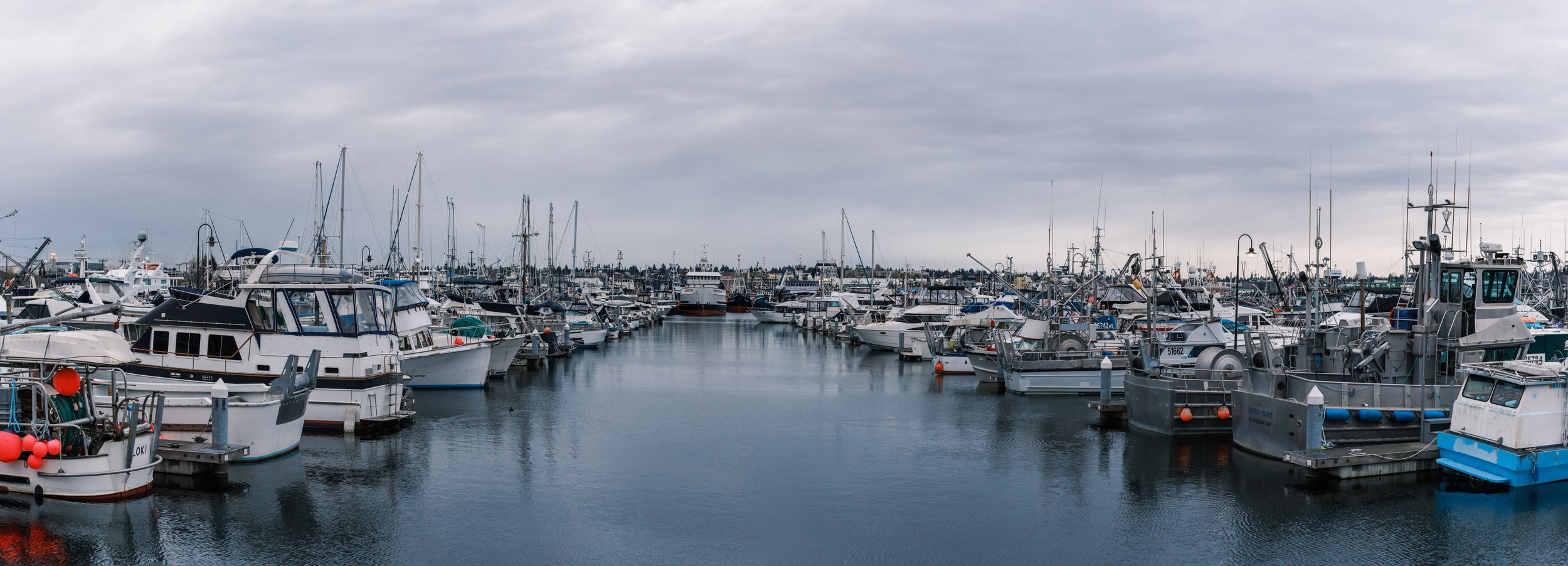

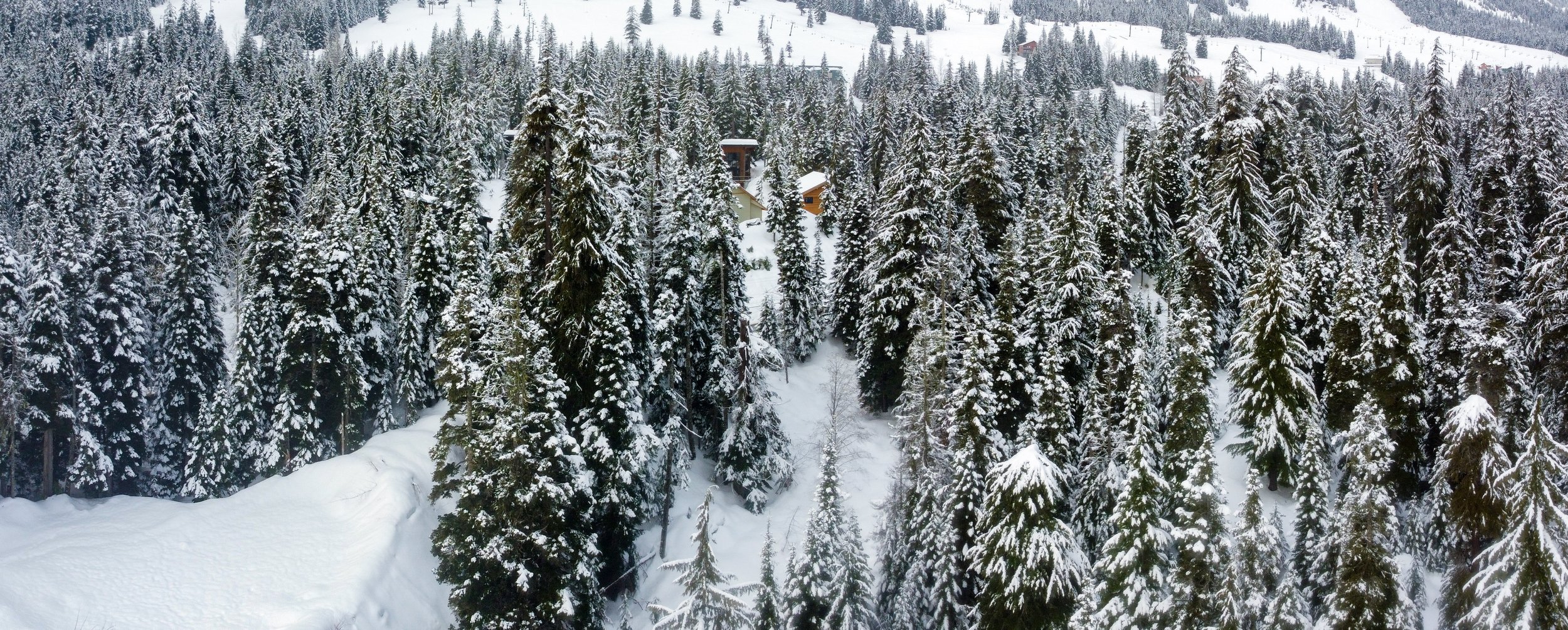
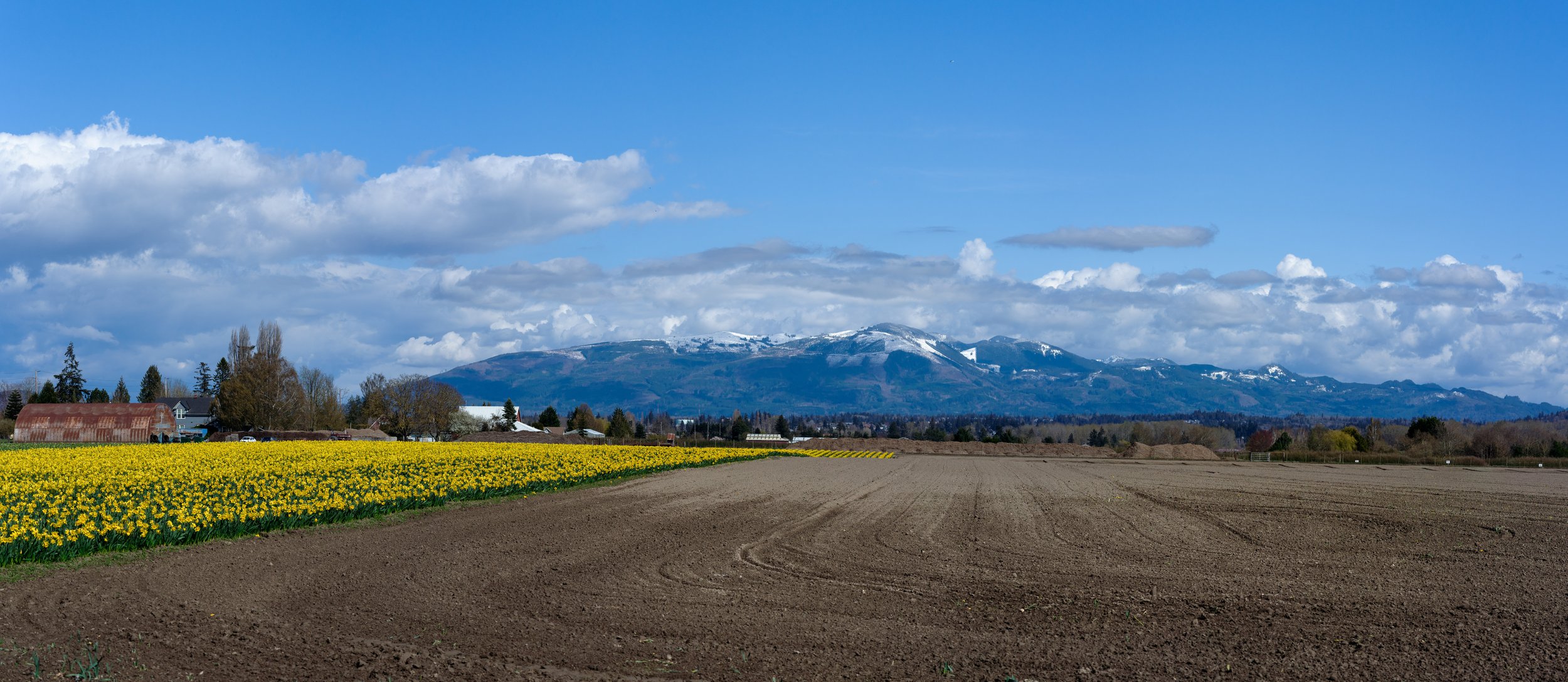

For those of you embarking on your photography journey or looking to deepen your practice, remember that the most important step is to get out there and shoot. Experience is the best teacher. So, let’s put down our phones, step away from the endless gear reviews, and embrace the world through our lenses. Let's capture the beauty of the mundane and the splendor of the familiar. That's what makes us photographers, not just gear collectors. Let’s make this year about creating, learning, and growing in our art.
Back in Focus: Rediscovering My Photography Passion
After a break from creating videos, I'm back to share my journey with you all. I initially started this channel to indulge in the joy of photography, but as the focus shifted towards memberships and sessions, I lost touch with that simple pleasure. So, I took a step back, and what a change it has been! I've been snapping away, with my picture count soaring from 40 in January to over 500 in March, thanks to my new Fujifilm X T5 and other beloved cameras like the Ricoh GR3x and Sony A7ii. Plus, our new puppy has become a delightful muse, filling my camera roll with joy and energy.
My journey hasn't just been about photography. I ventured out of my comfort zone with an improv class, embracing the sheer fun of it, much like my approach to photography. This year's theme for me is about trying new things and pushing boundaries, which has led me to train for a half-marathon. Moreover, I've rekindled my love for writing, simplifying my website to focus on blogging about my photography adventures and thoughts. This process feels like creating my own magazine articles, where I discuss everything from camera reviews to the rejuvenation of photography in spring. It's not about numbers or sponsorships; it's about the love for the craft.
I'm grateful for the continuous support, which inspires me to share my experiences on my channel and website, aiming for regular posts but realistically expecting updates twice a month. I've also embraced the Glass community for photo sharing, stepping away from mainstream social media. This journey is more than just my personal exploration; it's an invitation for everyone to find joy in photography, whether in your backyard or beyond. Your support means the world, not just to me, but also to our adorable new puppy! So, stay tuned for more stories, tips, and inspiration as we all enjoy this photographic adventure together.
Spring Photography Adventures
Spring is a season of vibrant transformation, especially here in the Pacific Northwest. As the landscape awakens, I find myself eagerly venturing outdoors, camera in hand, to capture the stunning blooms and the general shift that envelops our region. This year, my photography journey is particularly exciting as I explore with a curated selection of gear that enhances my creative expression.
My current go-to cameras are the Fujifilm XT-5 and the Ricoh GR 3X. This duo has proven to be exceptionally versatile for all my photography needs. The Fujifilm XT-5, paired with the 16-80mm F4.0, offers stunning portrait and close-up shots of nature's beauty. It's my choice for capturing the intricate details of spring flowers and the subtle changes in the environment.
As a hobbyist, I cherish the freedom and simplicity of my photography. There's no pressure of client expectations or the need for large prints. This season, I've decided to lighten my camera load significantly, focusing on enjoying the process rather than being weighed down by equipment. With my current setup, I find that I'm more engaged in the creative flow, spontaneously capturing the beauty around me.
FujiFilm X-T5 First Impressions
This past week marks a pivotal moment in my photography journey – I've had the joy of embracing the Fujifilm X-T5 as my new everyday carry camera. And let me tell you, it's been an absolute blast.
For years, my trusty Sony A7R2 had been my go-to camera. It's the one that revolutionized my approach to photography, a true game-changer that rarely left my side. But as much as I adored it, and my Sony A6400, their reliance on RAW files often felt cumbersome. Shooting in JPEG with these cameras just didn't cut it. That's where the Fujifilm XF10 and Ricoh GR3X stepped in, transforming how I approached photography on a personal level. Suddenly, the hassle of editing RAW files for personal projects seemed unnecessary, and frankly, it dampened my enthusiasm for capturing everyday moments.
The Fujifilm X-T5, however, reignited that spark. Opting to shoot in JPEG has streamlined my workflow remarkably. No longer burdened by the need to extensively edit each photo, I've found myself more eager to take this camera everywhere, capturing life's spontaneous and precious moments. And what's fantastic is the ease with which I can transfer these pictures to my phone and share them with loved ones. The JPEGs are so impressive straight out of the camera that they require little to no tweaking.
What truly astounds me about the X-T5 is the quality that emanates from its 40-megapixel sensor. Paired with the Fujinon 16-80mm f4.0 and the compact 27mm F2.8 lens (a 40mm full-frame equivalent, much like the GRX), this camera is a powerhouse. I'm still in awe of the image quality, especially when I bring them into Lightroom. And cropping? A breeze! Unlike with my previous APC cameras, where I hesitated to crop for fear of losing detail, the X-T5 lets me crop without sacrificing image quality.
Now, I'm contemplating my next steps regarding lenses. I'm torn between sticking to prime lenses or expanding into the world of zoom lenses. Particularly tempting is the 50-140mm F2.8 – perfect for travel or capturing my kids' baseball games with that lovely, soft background and sharp subject focus. And let's not forget the 18-300mm optionfrom Tamron. They have never disappointed me with their lenses, and having that zoom range would make the X-T5 an ideal travel companion.
As I continue to explore and familiarize myself with the Fujifilm X-T5, my excitement only grows. This camera isn't just a tool for me; it's a companion on my journey to capture the beauty and spontaneity of everyday life. I can't wait to see where this journey takes me next, and I'm eager to share my experiences and discoveries with all of you.
My Return to the World of Photography
In the world of art and expression, few mediums are as intimate and powerful as photography. It’s a craft that has always been close to my heart, a way to capture the essence of a moment, to tell a story without words. But recently, I've hit a roadblock. For the last few months, my cameras have been gathering dust, untouched and unused. I couldn't pinpoint why, but the urge to capture meaningful images seemed to have vanished, leaving me in a state of creative limbo.
Rediscovering the Passion
This disconnection from my cameras wasn't something I had anticipated. Photography, for me, had always been akin to a reflex, an inherent part of my daily life. Yet, there I was, finding myself more often than not leaving the house without my trusted companions - my DSLR and mirrorless cameras. All I had were my iPhone and Samsung S22 Ultra, which I used for casual snapshots, but the deep engagement with photography seemed lost.
It reminded me of how skills can rust if not regularly honed, similar to how muscles atrophy without exercise or how a song can slip away from a singer’s memory. But photography, like any art form, is also about the rhythm of practice and the joy of rediscovery. Just as a cyclist never really forgets how to ride, I knew deep down that the essence of photography was still within me, waiting to be reawakened.
The Power of Observation
The turning point came when I started carrying my Ricoh Gr3x with me again. It was a subtle change in routine, but its impact was profound. This camera, compact yet capable, became my lens to view the world, quite literally. With it in hand, the mundane started transforming into scenes brimming with potential stories.
I began noticing details I had previously overlooked. The way tiny droplets of water clung precariously to the tips of green leaves, shimmering like jewels in the morning sun. The determination in the stride of a lady pushing a stroller down the sidewalk, is a moment of everyday struggle and love. Even the faded, worn-out parking lines in an old lot, each mark telling a story of countless vehicles that had come and gone, became subjects of interest. These observations, though seemingly trivial, rekindled a sense of wonder within me.
I realized that photography isn't just about capturing a perfect image; it's about seeing, truly seeing. It's about finding beauty and narratives in the ordinary, about understanding that every aspect of our surroundings can become a masterpiece if viewed through the right lens.
Lessons from Kobe Bryant
This journey of rediscovery also reminded me of a powerful lesson I once heard from Kobe Bryant. He advised a group of aspiring basketball players that the greatest discipline is to do the challenging things, especially when you least feel like doing them. This resonated with my experience in photography. For me, it translated to carrying my camera everywhere and taking thousands of imperfect pictures. It wasn't about each photo being a masterpiece, but about being ready and willing to capture the moment when it arrives.
The Importance of Practice and Preparedness
The journey back into the world of photography has been a reminder of a fundamental truth: the essence of good photography lies in being prepared. It's about having the camera ready, not just physically, but also mentally and emotionally. This readiness isn't just about technical skill; it's about being in tune with the environment and anticipating those fleeting moments that make for a great photograph.
Through regular practice, I've relearned the importance of patience and persistence. Capturing the 'decisive moment', as the legendary photographer Henri Cartier-Bresson termed it, isn't just a matter of luck. It's the result of countless hours spent understanding light, composition, and most importantly, life as it unfolds in its myriad forms. Every shot I take, no matter how imperfect, is a step towards refining my craft, towards being better prepared for when that perfect moment presents itself.
Encouragement to Readers
To those of you who, like me, might have found your cameras collecting dust, or your passion for photography waning, I encourage you to take a small step. Carry your camera with you, be it a sophisticated DSLR, a compact point-and-shoot, or even your smartphone with a keen eye for detail. You'll start to see the world differently, noticing nuances and stories you might have missed before. Keep a camera in your car, your backpack, or your daily bag. Let it be an extension of your vision. The world is full of beauty and intrigue, waiting to be captured through your lens.
In conclusion, my journey back to photography has been more than just about taking pictures. It has been a journey of reawakening a passion, of learning to see the beauty in the ordinary, and understanding the discipline required to capture it. Whether it's photography or any other passion you've drifted away from, I hope my experience inspires you to pick up where you left off. Remember, it's never too late to rediscover a lost love or to see the world through a new lens.













































































































